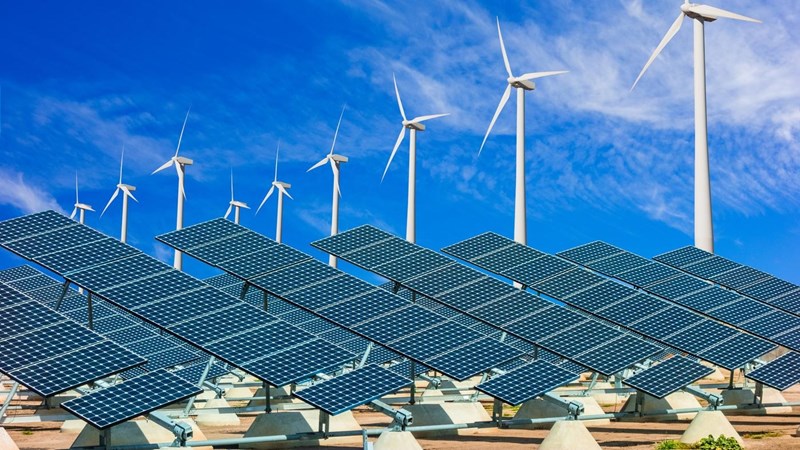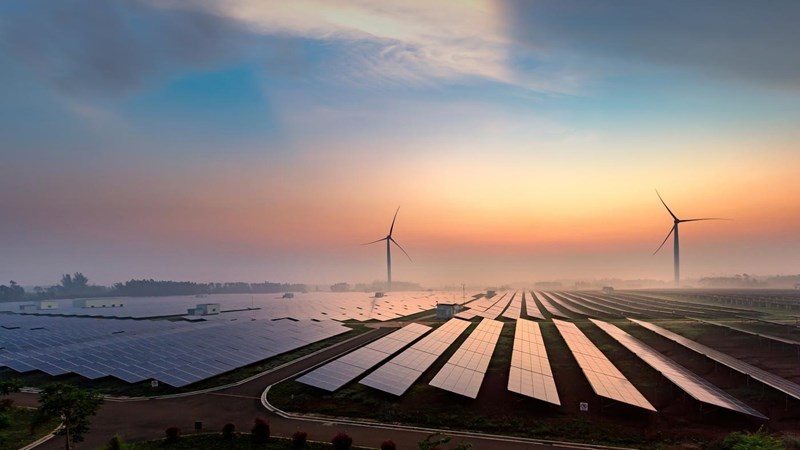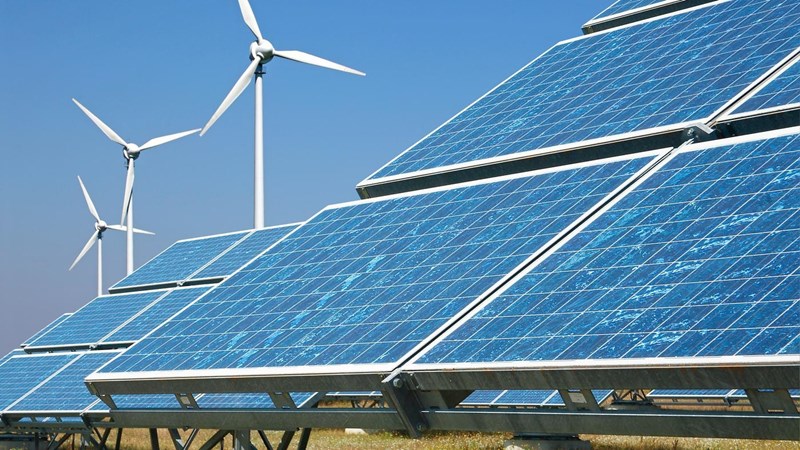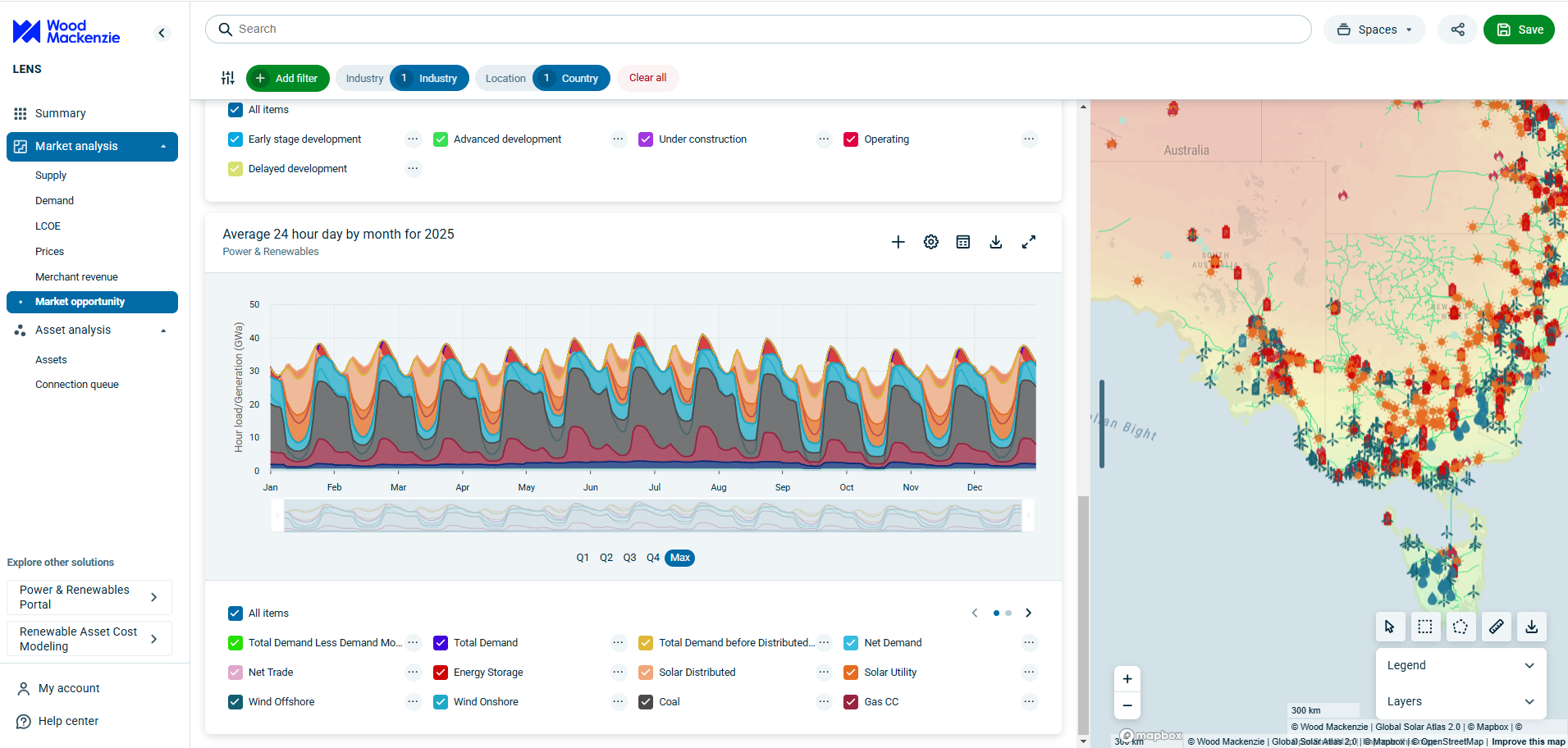How investors must navigate the world of renewable energy investment
The energy transition offers huge renewable investment opportunities but also presents more wide-ranging risks than ever
Renewable energy investment opportunities
Efforts to pivot power production towards clean energy are creating huge renewable energy investment opportunities. The need to stabilise electricity supply is boosting demand for battery storage now and long duration energy storage in the longer term, while comprehensive changes to the geographical spread of power generation requires new transmission infrastructure, both on- and offshore.
These profound changes mean investment banks, asset managers and other financial services companies need more accurate information than ever to tailor renewable energy investment strategies and manage risk. And the scale of the required financing is changing quickly.

Scaling power demand
There are more challenges to power sector investment than ever before, with uncertainty over the scale of power demand, the balance of the generation mix and methods of power procurement. Geopolitical, political and economic risks make the financing landscape even more complicated.
As a result of these challenges, it is becoming increasingly difficult to accurately value assets and contracts. Banks and other financial institutions need a broad overview of the power sector value chain to better assess risk levels and create long-term, resilient value for investors.

The key challenges facing investors
The energy transition to a low carbon future is carving out investment opportunities but also spawning new and complex risks for investment managers and market participants to navigate.
Demand for electricity is rising across the world and electrification will be a huge growth driver, particularly in transport and some previously hard-to-reach industrial processes, but there is uncertainty over the pace of that growth. At the same time, while AI and cloud computing are boosting demand for electricity, more efficient processing may rein in data centre energy consumption.
The commercial viability of projects is vulnerable to inflation, financing costs and supply chain constraints, all of which have become more unpredictable following the Covid-19 pandemic and the Russian invasion of Ukraine.
Populist sentiment has triggered a backlash against the energy transition in some countries. Yet this is likely to affect the pace rather than the direction of change in most markets, particularly because solar and wind power often offer the lowest cost power production.
Even in attractive investment environments, the speed at which new projects can be brought online can be limited by ageing grids, permitting bottlenecks, interconnection queues and environmental opposition.
Changes to the financial instruments used to drive renewable energy investment to date are likely. It may become more common to index PPAs to inflation or interest rates to avoid a repeat of the offshore wind project cancellations that hit US offshore wind in 2023-24.
Growing enthusiasm for 100% 24/7 carbon free energy is driving interest in granular certificates. Rather than merely procuring clean energy equivalent to their consumption, which can focus on the low-hanging fruit of daytime solar production, some corporates have pledged to reach 100% 24/7 carbon free energy by 2030. This will require granular procurement – buying electricity equivalent to their consumption for every hour of the day. This should drive interest in energy storage, pumped hydro and small modular reactors and advanced nuclear technology.
Rising power demand: what investors need to know
- We are at the start of a new demand era. Electrification and data centres will drive increased demand for electricity, creating considerable investment opportunities in the process.
- The cumulative impact of demand growth drivers will increase global power demand by 3.4% a year through 2026.
- Clean energy will be the main contributor to meet new demand. According to the IEA, the world will add 5,500 GW of new renewable capacity over 2024-30, three times more than over 2017-23. This will push the solar and wind share of global generation from 15% at present to 30% by 2030.
- This will create huge investment opportunities for new technologies. The move to clean energy will largely be driven by bank financing, as it requires substantial financial muscle and new technology.
- Generous government investment incentives are supporting investment. The Inflation Reduction Act helped add 75 GW to the U.S. grid in just two years but these benefits could be scaled back, while those in the UK and EU remain in place.
Specific energy transition concerns for investors
The global push towards ESG
Sustainability requirements are reshaping how banks approach investment now and in the future
SMRs & advanced nuclear reactors
There is real uncertainty in the banking community over whether they will play a major role
Mitigating risk
Identifying, understanding and addressing these risks head-on is fundamental for smarter capital allocation investment strategies
M&A activity
M&A activity is being driven by government support for renewables in many markets, but demand uncertainty is making valuations difficult
Key reasons to act now
- Geopolitical protectionist policies pose cost increases and supply risks for an industry heavily reliant on international trade. These uncertainties coupled with new demand growth have created a bullish market on power prices, creating opportunities for the savvy investor.
- Basis risk has tripled in some markets since 2017, putting downward pressure on existing portfolios and making it difficult to assess future risk on new projects.
- The risk of making poor investment decisions: there is significant pressure to get projects built but interconnection delays are sometimes not identified until financing has already been committed to land rights and permitting.
- Market volatility can open the door to investment opportunity: demand growth can drive changes in power prices, basis differentials and asset valuations. Unknowns can make or break a deal, so investors need to be as well informed as possible.

How Lens Power & Renewables can help
Lens Power & Renewables offers a complete data analytics solution to strengthen power market investment strategies for the energy transition. It connects regional power market fundamentals and renewable technologies, including solar, wind and energy storage data and insights, in an easy-to-use, unified platform.
Secure access to a depth of authoritative information and insight. Only by leveraging the highest quality data and insights covering every stage of the value chain is it possible to understand the complex and interconnected dynamics of global energy and materials markets.

Key features of Lens Power & Renewables
Screening and benchmarking
Screening and benchmarking
Screen and benchmark companies, portfolios and power generation assets in every market. Wood Mackenzie is the leading provider of power price curves, with trusted forecasts out to 2050.
Investigate power market dynamics
Investigate power market dynamics
Investigate power market dynamics of supply, demand and LCOE for all markets and technologies.
Benchmark corporate asset portfolios
Benchmark corporate asset portfolios
Benchmark corporate asset portfolios with full transparency into the development pipeline.
Screen for development sites
Screen for development sites
Screen for development sites with unique geospatial layers and filters.
Powerful API service
Powerful API service
Powerful API service to seamlessly integrate Wood Mackenzie data into your own proprietary systems and BI tools, including Excel, Power BI, Spotfire and Tableau.
Validate portfolio strategies
Validate portfolio strategies
Minimise risk by validating portfolio strategies against Wood Mackenzie data and models.
Intuitive interface
Intuitive interface
Increase productivity and lower costs with immediate insights using an intuitive interface fit for all users.
Price forecasts
Price forecasts
Historic settled power prices, real-time, long-term zonal forecasts, and nodal price projections to create end-to-end analysis.
What sets Wood Mackenzie apart?
- Reliable, accurate cost trends: Lens delivers detailed, component-level pricing customised to your assets, empowering optimal strategy development, budgeting and ROI assessments.
- Demand and supply outlooks driven by bottom-up analytics: We model what is feasible, developing models that are interconnected to look at inflection points. In times of demand and supply uncertainty, our teams focus on fundamental drivers.
- Price curves that reflect the output of hundreds of analysts and thousands of hours of model simulations: Lens models look at the price impacts of policy and economics. Every assumption is defined and outlined, giving users confidence in our scenario outlooks to align with their business.
- Underpinned by Wood Mackenzie’s renowned expertise across the globe: Our industry analysts give you impactful perspectives on policy, demand, development opportunities, technology trends, market reforms, grid integration, supply chain constraints and risk – all with a view to evolving your power market investment strategies.

Unrivalled resources
Our team comprises over 2,000 specialists covering all areas of the energy supply chain
We are uniquely capable of delivering analysis across interconnected markets
Based in 30 global locations, we work in close partnership with energy producers, governments, financial institutions and utilities around the world





